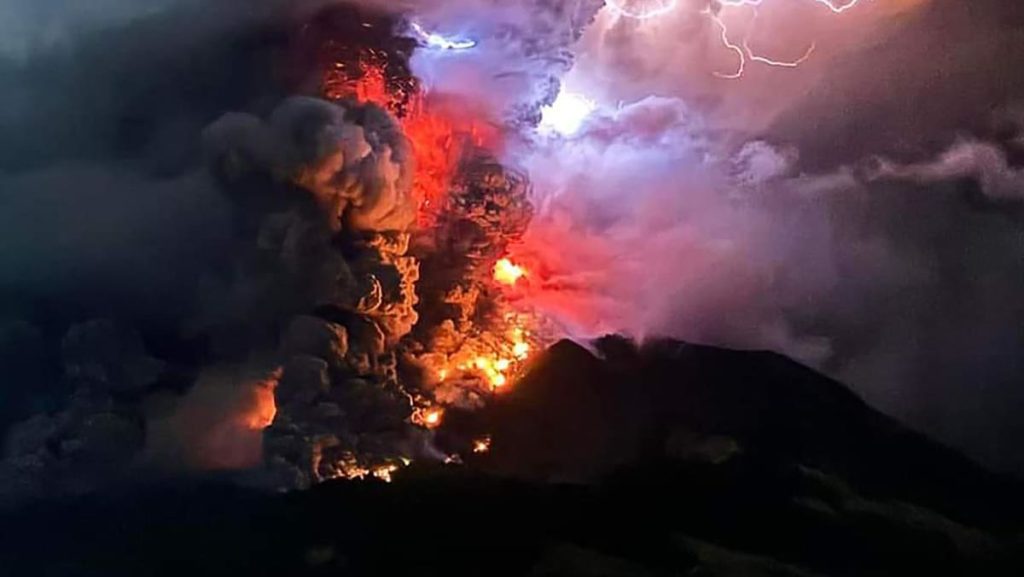Mount Ruang, a volcano in Indonesia’s remote region, erupted five times, prompting the evacuation of thousands of people and the closure of a nearby airport. The volcano flamed with lava and lightning bolts, raising its alert level to the highest tier. The eruption caused a column of smoke to billow from the crater, leading to the closure of the international airport in Manado city for 24 hours.
Authorities were working quickly to evacuate 11,000 residents from the area, including Tagulandang island, which is home to approximately 20,000 people. Houses on Tagulandang were damaged by falling volcanic rocks, and residents were preparing to leave temporarily due to the dangerous conditions. The roadways were covered in volcanic material, making it difficult for residents to evacuate safely.
Local rescuer Ikram Al Ulah reported that many people were wandering around, possibly trying to salvage valuable items from their homes before evacuating. The situation was deteriorating, with volcanic rocks causing damage to houses and posing a threat to residents. The urgency of the situation required immediate action to ensure the safety of those living in the area.
The eruption of Mount Ruang had significant impacts on the surrounding area, forcing residents to leave their homes and seek shelter in safer locations. The remote location of the volcano made it challenging for authorities to provide assistance to those affected by the eruption. Residents were advised to evacuate as quickly as possible to avoid potential risks from falling debris and volcanic activity.
Authorities issued warnings about the potential for a tsunami to occur as a result of the eruption, adding to the urgency of the evacuation efforts. The situation was constantly evolving, with the volcano continuing to emit smoke and ash, creating hazardous conditions for residents. The closure of the airport in Manado city further disrupted travel in the region, affecting both residents and visitors.
The eruption of Mount Ruang highlighted the unpredictable nature of volcanoes and the need for effective evacuation plans in at-risk areas. The coordination of rescue efforts and the provision of aid to those affected were crucial in ensuring the safety and well-being of residents. Despite the challenges posed by the eruption, efforts were underway to evacuate residents and mitigate the potential impact of the volcanic activity.


